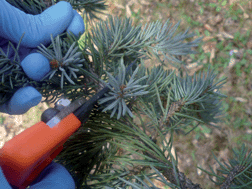Review: use of conifer needles as passive samplers of inorganic pollutants in air quality monitoring
Abstract
This review aims to determine the challenges and perspectives of using conifer needles as samplers of particulate matter. The characteristics of these substrates are described and their advantages in monitoring air quality and in reconstructing recent pollution events and sources are highlighted. Monitoring air quality in this way enables the evaluation of the efficiency of improvements in air quality policies or in industrial off-gas abatement systems. The analytical procedures necessary for the effective exploitation of these samplers are assessed by critically discussing previously published analytical protocols. By supporting the discussion with original experimental data, the benefits of combining bulk (e.g., inductively coupled plasma atomic emission spectroscopy) and single particle analytical methods (e.g., scanning and transmission electron microscopy in association with spectroscopy) are highlighted. It is proposed that, if analytical protocols are tailored to the study of particulate matter collected by conifer needles, a reliable and cost-effective monitoring strategy could be widely adopted in many countries and used to reduce the impact of particulate matter on human health and the environment.


 Please wait while we load your content...
Please wait while we load your content...